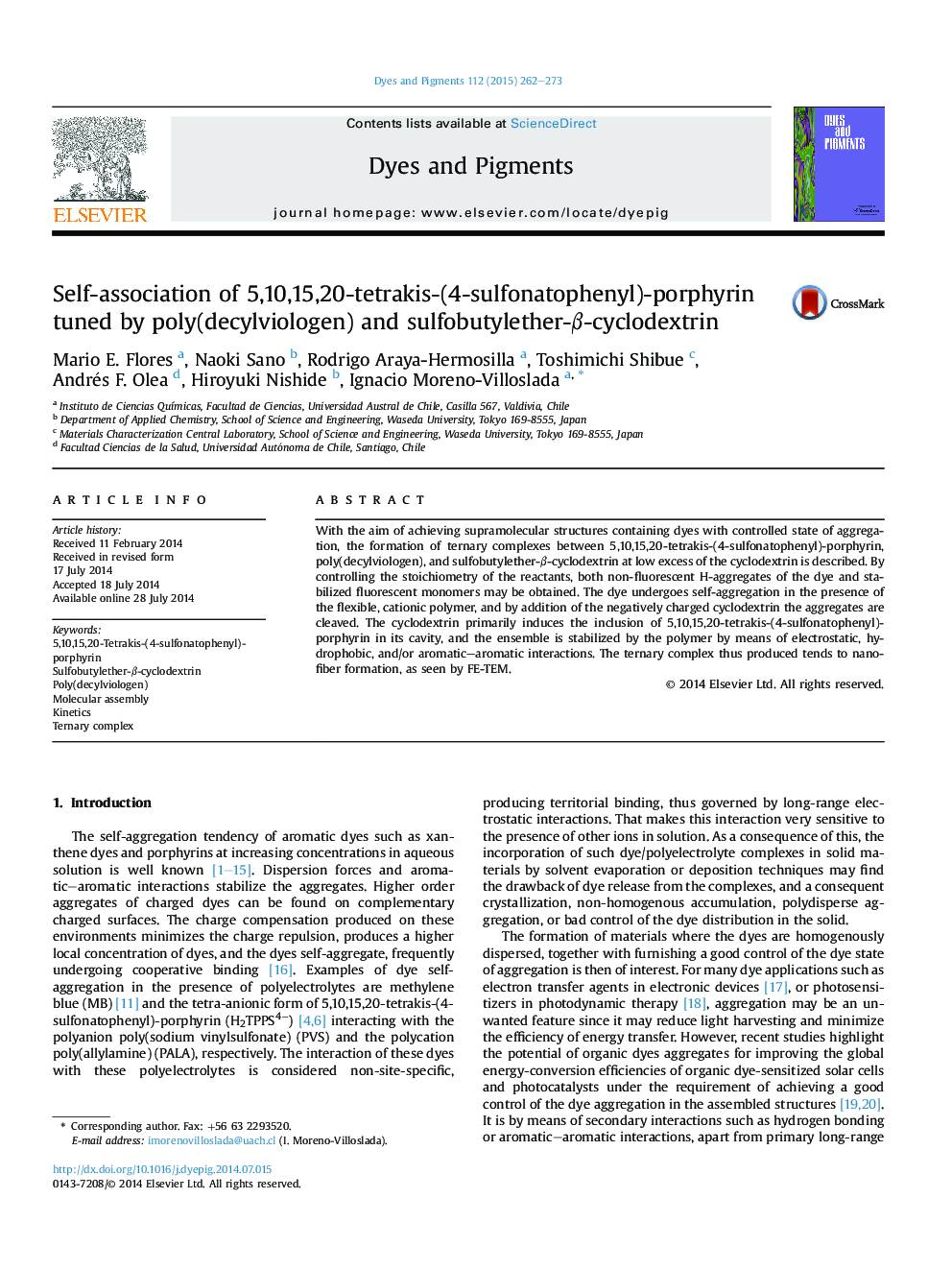| Article ID | Journal | Published Year | Pages | File Type |
|---|---|---|---|---|
| 175957 | Dyes and Pigments | 2015 | 12 Pages |
•Poly(decylviologen) induces H-aggregation of the porphyrin.•Sulfobutyl-b-cyclodextrin forms complexes with the polymer and the porphyrin.•Polymer /porphyrin titration with cyclodextrin produces disaggregation of the dye.•Ternary complexes of the three species are formed that tend to form nanofibers.•Complex formation kintetics constants range in the order of tenths of senconds−1.
With the aim of achieving supramolecular structures containing dyes with controlled state of aggregation, the formation of ternary complexes between 5,10,15,20-tetrakis-(4-sulfonatophenyl)-porphyrin, poly(decylviologen), and sulfobutylether-β-cyclodextrin at low excess of the cyclodextrin is described. By controlling the stoichiometry of the reactants, both non-fluorescent H-aggregates of the dye and stabilized fluorescent monomers may be obtained. The dye undergoes self-aggregation in the presence of the flexible, cationic polymer, and by addition of the negatively charged cyclodextrin the aggregates are cleaved. The cyclodextrin primarily induces the inclusion of 5,10,15,20-tetrakis-(4-sulfonatophenyl)-porphyrin in its cavity, and the ensemble is stabilized by the polymer by means of electrostatic, hydrophobic, and/or aromatic–aromatic interactions. The ternary complex thus produced tends to nanofiber formation, as seen by FE-TEM.
Graphical abstractFigure optionsDownload full-size imageDownload as PowerPoint slide
